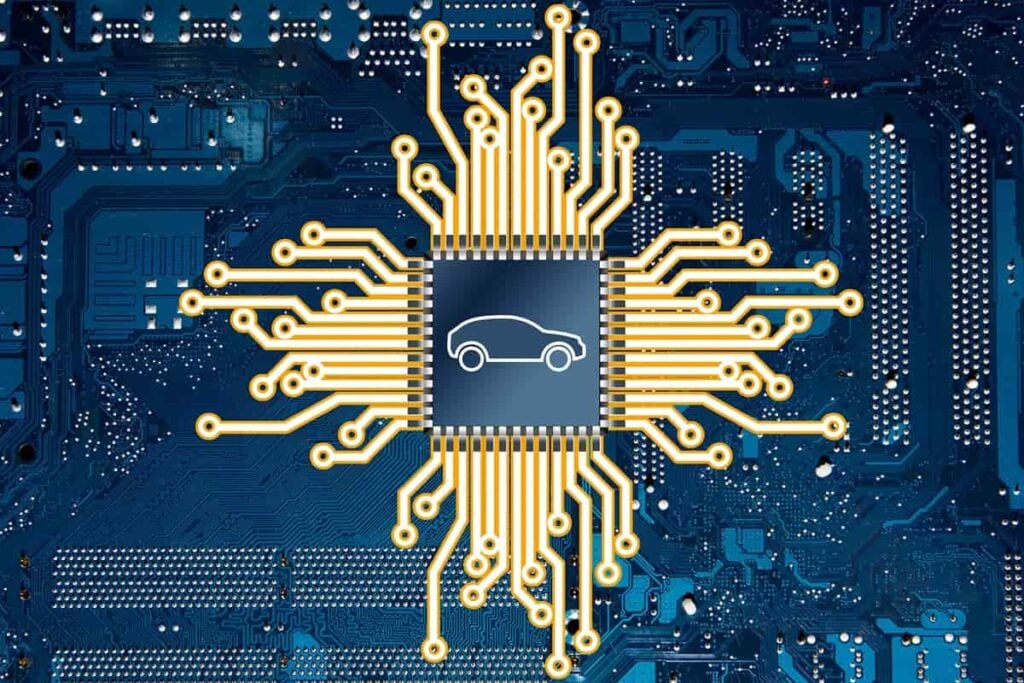When Will We Have Electric Cars with Solar Panels?
Table of contents

Electric vehicles have been in the news quite a bit lately – and we’re not just talking about a certain CEO who may soon be a fugitive from justice, tweeting out manifestos from an undisclosed location, about driving cherry red roadsters on Mars. You may have noticed that Chinese electric vehicle manufacturer NIO (NIO) finally went public, with the expected volatility of the shiny and new. And speaking of Elon Musk: He must have been more than a little pissed off to learn that his deep-pocketed buddies in Saudi Arabia are about to fork over more than $1 billion to Lucid Motors, an EV startup and rival that has drawn the usual comparisons to Tesla.
While the electric vehicle market is still light years from being mature, it does seem to be turning a corner. This left us wondering what would be the next thing in the green energy automotive economy. One possibility: solar-powered cars. Or, if you want to be technical about it: electric cars with solar panels.
A Little History on Solar-powered Electric Vehicles
To be clear, solar-powered electric vehicles are nothing new. Way, way back in 1955, a GM employee named William G. Cobb exhibited the first sun-powered vehicle at a Chicago expo. Cobb was really just toying around: The car was barely a foot long, using 12 selenium photovoltaic cells and a small electric motor. You could call him the father of the solar-car racing industry. Now, there are at least two major challenges held each year in which contestants combine engineering skills with a Burning Man aesthetic to produce a contraption that can live off the sun alone. The first solar car to travel a healthy distance – the breadth of Australia – was The Quiet Achiever in 1982. Cruising at an average speed of 14 miles per hour, The Quiet Achiever achieved its goal of crossing more than 2,500 miles of Mad Max Outback in about 25 days.
Rather fly? In 2016, the first solar-powered airplane circumnavigated the globe. It only took 23 days. There’s even a train with solar panels that travels about two miles through the hippy surf town of Byron Bay in Australia. So, if history has taught us anything so far, it’s that while solar-powered transportation is possible, it’s still a sideshow. When will it be ready for primetime?
How Does an Electric Car with Solar Panels Work?
Before we answer that question, let’s navigate how a solar-powered electric vehicle works. One thing to keep in mind is that a solar vehicle is just an electric car with solar panels. It will sport one or more electric motors and batteries. There is obviously a fair amount of math involved, but to keep it simple: The amount of sunshine will determine the amount of power output from the solar panels that charge the battery. Excess energy, such as when the car is parked, is stored in the battery. When it’s time to hit the highway, the power required by the motor will draw upon the battery.

Engineers can employ all sorts of tricks to make solar-powered cars maximize the energy they get from the sun, from building more efficient solar panels to better aerodynamic designs for reducing drag, to manufacturing the car out of lightweight materials.
When Will We Get an Electric Car with Solar Panels?
Technically, it has already happened. Toyota introduced a solar panel option on its Prius hybrid plug-in model in 2012. It could produce about 50 watts of energy, enough to power a cigarette lighter, if that was still an option in today’s automobiles. Last year, Toyota upped its game with a solar panel roof developed by Panasonic that provides up to 180 watts. That’s still only good enough to increase the car’s efficiency by about 10 percent, reportedly adding up to four miles of range per day. That option is only available in Japanese and European markets.

Some have argued that it will never happen. Engineer and professor Tom Lombardo has written an oft-quoted piece that says the best we can hope for is a solar-powered assisted car that can add a couple of hundred miles of range to an electric vehicle. Lombardo’s back-of-the-napkin calculations show that even a hypothetical solar panel that is 100 percent efficient (and doesn’t even exist today; the best can get is near to 23 percent) with the maximum amount of solar energy possible, would only produce about 6.4 horsepower. Lombardo notes that his riding lawnmower sports a 12-horsepower engine.
Lombardo wins the argument only because he narrowly defines a solar-powered vehicle as one that runs directly from the sun’s energy rather than storing solar panel output into a battery. Otherwise, he says, you’re driving a battery-powered vehicle. While we understand the distinction, it seems nitpicky to us. So, we’ll repeat the question: When will we get a solar-powered car?
The Luxury Solar-powered Car
The answer could be by 2020. That’s when Lightyear, a Dutch company founded in 2016, says it will deliver its first model, Lightyear One. The company took in $5.8 million in April. Its origin story actually dates back to 2013 and the Bridgestone World Solar Challenge, where a group of students designed and drove a solar-powered family car about 2,000 miles across Australia. The team won the challenge again in 2015 after driving another solar-powered vehicle more than 900 miles on a single charge. Now the startup, founded by five of the student alumni, is ready to take their concept on the road to financial success.

Boasting a range of up to 500 miles, Lightyear claims its solar-powered car can go months without requiring a charge, with about 75 percent of yearly usage (about 12,000 miles) covered by the sun. Each car is equipped with more than 40 square feet of solar cells, which are 20 percent more efficient than your average photovoltaic. Cold weather locations can expect some drop in efficiency, and those living at the South Pole can expect significantly reduced mileage. Lightyear One does feature a charging port for those rare occasions where you might need a boost off the power grid. In that case, Lightyear One can charge at a rate of about 25 miles per hour or nearly 350 miles at a fast-charging station.

The solar-powered car has a few other tricks under the hood – and elsewhere. Let’s start with the in-wheel motors, which help improve efficiency and range, as well as add some serious traction. The lightweight carbon body is another piece in the design that helps the car go faster while requiring less power.
Ready to reserve your Lightyear One? Get in line and be prepared to pony up $140,000. Hopefully, your recent cannabis investments have paid off.
The Budget Solar-powered Car
If you can’t wait until 2020, then you might be able to score an electric car with solar panels as early as next year – and at a fraction of the cost. That’s when Germany’s Sono Motors expects its Sion solar-powered vehicle to hit European roads. Also founded in 2016, Sono Motors took in about $2.1 million in crowdfunding equity late last year. While the Sion boasts a much more modest range, about 155 miles, it also comes with a much more reasonable price tag. You can order one today for about $23,500, which includes the battery. There is also the option to lease the battery monthly, which would knock nearly $5,000 off the base price. The company says it already has more than 7,500 reservations.

The car’s roof, hood, and entire body are fitted with 330 monocrystalline silicon cells protected by a layer of polycarbonate that can generate a maximum power of 1,204 watts with 24 percent efficiency. That means the Sion can generate about 18.5 miles of extra range per day directly from the sun. While it won’t break any distance records, the Sion isn’t meant to be taken through the Australian Outback but on around-the-town errands.
If all that’s not eco-friendly enough for you, the Sion practically comes with its own chia pet: A tree-hugging engineer at Sono somehow talked the company into installing a special moss into the dashboard for the air-filtration system. It uses something called electrostatic gravitation to filter up to 20 percent of particulate matter out of the air, while providing “positive effects” for the temperature and humidity inside the car. You don’t need a green thumb, as the moss reportedly takes care of itself.
Update 01/20/2020: Sono Motors has raised $55.42 million in one of Europe’s largest crowdfunding campaigns to date in order to debut the company’s solar electric car. This brings the company’s total funding to $71.9 million to date.
Conclusion
The electric vehicle market is heating up quickly, but barriers remain for widespread adoption, such as the lack of a comprehensive network of charging stations. As the World Economic Forum has recently pointed out, overcoming people’s fears of being stranded in an uncharged vehicle could drive demand for solar-powered cars. Let’s just hope you’re not too far from home.
Sign up to our newsletter to get more of our great research delivered straight to your inbox!
Nanalyze Weekly includes useful insights written by our team of underpaid MBAs, research on new disruptive technology stocks flying under the radar, and summaries of our recent research. Always 100% free.














Installing solar cells would be partially self-defeating. There is some added weight, which would increase energy use. Additionally, to make best use of the solar cells, the car would need to be parked in full sun. This would cause the car’s interior to heat up, prompting the driver to turn on the air conditioning for comfort. This would also increase energy use. The net results would likely still be energy positive, but not as large as one might think.
The weight of the solar cells is insignificant, as they are basically as thin as the paint they replace. By having solar cells, one can go farther with a smaller battery, and that clearly saves weight and energy. As for the interior heating up in the sun, just roll down the windows and start driving. I have a black car and that usually works great. The only time I use air conditioning is on hot days, where it doesn’t matter what color the car is, as the outside air is still hot regardless.
My main concern is if you get in an accident and damage one of those solar body panels, then I guess the whole panel would need to be replaced, which could be expensive, even if you installed it yourself.
Good point on having to replace panels in the case of a fender bender.